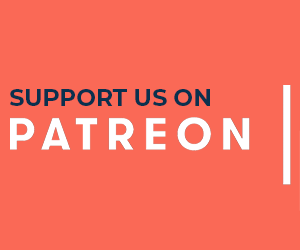With the backdrop of an historic vote by MPs to legalise assisted dying for terminally ill adults in England & Wales, those for and against the law continue their arguments and campaigns – because there’s still plenty to play for. The bill has still to undergo intense scrutiny and inevitable amendments during the committee stage in the House of Commons, after which it still needs to pass through the House of Lords before it will become law.
As a (hopefully) good skeptic, it’s important to try to put personal feelings aside and look at the arguments as objectively as we can. Part of your skeptical toolkit should of course be knowledge of logical fallacies, but just it’s important that we don’t treat those as ‘gotchas’, particularly in relation to literal life and death situations. With that in mind, let’s take a look at some logical fallacies at the forefront of the assisted dying debate, and why we need to look beyond them to really understand and address concerns in a reasonable and compassionate way.
The Nirvana Fallacy
For those against assisted dying, there is an argument that no law will fully safeguard vulnerable people. This is an example of the nirvana fallacy, which makes a comparison of a real-life situation with an idealised alternative. The counter-argument to this is frequently the old adage, “Don’t let perfect be the enemy of the good”. Life is of course messy, and nothing can be perfect, but dismissing the argument out of hand is inappropriate.
It’s certainly not acceptable for checks and balances to simply be ‘good’ when it comes to making a decision on a person’s eligibility to end their life in this way. Proponents argue that those are well accounted for in the legislation, but there are factors such as administrative costs and practicality that come into play.
There can of course be counter-arguments that some checks and balances take things too far, and for a heartbreaking example of a struggle to jump through administrative hoops you can read the story of Allan Cornell.
There is of course subjectivity involved in evaluating what is safe and appropriate, and no two people will draw the line in the same place. Nevertheless, a line must be drawn somewhere, and it’s likely to make more people unhappy than it will satisfy. This is not however a reason to do nothing, because that represents the drawing of a very hard line right over at the other side of the debate.
The False Dilemma Fallacy
A continuing theme of the assisted dying debate is that the provision and funding of palliative care should be vastly improved, rather than turning our attention to providing a means for dying people to finish the job early. Also known as a false dichotomy, the false dilemma fallacy is clearly evident here, where we’re being presented a choice from only two options, when there are clearly more choices at hand, and the classic ‘why not both’ meme specifically springs to mind.
There’s no doubt that palliative care is incredibly important, but it’s somewhat less understood that it can also go hand-in-hand with assisted dying. As an example, Canadian statistics showed that 77.6% of people who received Medical Assistance In Dying (MAID) had received palliative care beforehand. Add to that the inconvenient fact that even the best of palliative care still doesn’t touch the sides in the worst of cases – feel free to Google for a barrage of horror stories, or get in touch with me and I’ll talk you though my brother’s final weeks before dying of lung cancer, if you want.
All that being said, it’s undeniable that end-of-life care with or without assisted dying could and should be better, and brushing aside those who are highlighting the current shortcomings is insensitive at best. To further muddy the waters, there are calls from critics citing other ‘more pressing’ issues in society that could and should be addressed first. To address those, cries of whataboutism may not be helpful, but perhaps a reminder that it is possible to address many different issues in parallel. If we accept the ‘now is not the right time’ argument, then that right time will almost certainly never come.
The Ad Hominem Fallacy
It’s possibly the quickest and laziest way of dismissing someone’s argument – call them out as belonging to a commonly denigrated group, and you can wash your hands of anything they have to say. The ad hominem attack is particularly tempting when it comes to evangelical Christians: they’ve got a proven track record of campaigning against anything to do with bodily autonomy and equality (see anti-abortion protests and outrage over same-sex marriage as examples), and it’s frequently easier to draw a line connecting an opponent of assisted dying to the church than it is to connect an actor to Kevin Bacon.
That being said, most Christian activists are at least self-aware enough to know their assertion, that life is a gift given from God and is not ours to take away, doesn’t wash with an increasingly secular public (now the majority in Scotland).

Even further into the realms of fantasy is the bizarre assertion from the Vatican that a request to die isn’t actually a request to die. From their Samaritanus Bonus publication on end-of life-care:
“The pleas of very seriously ill patients who sometimes ask for death should not be understood as an expression of a genuine desire for euthanasia; in these cases they are almost always anguished requests for help and affection”.
With a lack of any credible theological leverage, they are instead mostly pointing towards many other (real) concerns and statistics to bolster their arguments. Addressing those is of course important, but it’s also important to differentiate the type of faith-based concerns they may have in those other bodily autonomy debates from this one.
As an example, a great answer to Christian protests against same-sex marriage is “No problem, you don’t have to marry anyone who is the same sex as you”. This particular snippet of snipe doesn’t apply when it comes to assisted dying, because our demise is inevitable, whereas matrimony is almost always voluntary, and frequently not permanent.
It’s also important for us not to make assumptions that just because someone is Christian that they are opposed to assisted dying, or that their opposition is for religious reasons: there’s reasonable evidence to suggest that the majority of people of faith actually support the concept of assisted dying.
The Slippery Slope Fallacy
Imagine a dystopian Mad Max-style futuristic hellscape where crazed (but state-sponsored) death squads parade the streets with poison-laden blow darts. Anyone deemed to be of sub-optimal value to society is quickly dispatched for the sake of the greater good. Designed to leverage fear, the slippery slope fallacy conjures images of devastating knock-on effects of a single smaller change.
Opponents of assisted dying are of course not conjuring up quite the same cinematic scenario as the one I’ve just painted, but there are still noticeable levels of hyperbole to be found – see the recent ‘Euthanasia is just eugenics in disguise’ headline from Premier Christianity magazine as an example. The more extreme of these may not be worth addressing, but there are still valid concerns out there, and genuine evidence of expansion of scope in other countries where assisted dying has been legal for some time. The primary examples cited are the Netherlands and Canada where the initial legislation has subsequently expanded in scope.
As such, it’s appropriate to approach such concerns with realism. It’s not entirely outside of the realms of possibility that, if assisted dying is legalised in the UK, there may be pressure to widen its scope from those who feel it doesn’t go far enough, as situations like this have been the primary drivers of expansions in other countries. Inevitably there will be at least equal, if not more pressure from the other side to reduce the scope or even abolish the law. It’s also worth noting that change of scope is not inevitable, with Oregon’s law being pretty much unchanged in over two decades.
Appeal to Popularity Fallacy
Just because a lot of people like it, doesn’t mean it’s good or right. What I used to refer to as Bieber’s Law is more commonly known as the appeal to popularity fallacy. It stands to reason that the will of the people is not necessarily always in their best interest. Pick your least favourite election / referendum / Dancing on Ice result for an example.
In terms of the assisted dying question, the numbers are strongly in favour, with a recent YouGov survey showing 73% of Britons are pro new legislation, compared to only 13% against it. The poll didn’t drill down in terms of religiosity, but a recent survey commissioned by Humanists UK did, and it found that 65% of Christians were also in favour, which seems strangely at odds with many of the official voices in the various flavours of Christianity, although it’s not entirely a novelty for the real values of the flock not to match those of the preacher.
That said, favourable numbers don’t necessarily mean a slam dunk, because good ideas can be implemented badly, and among the larger population there may be smaller groups that might be disproportionately (and adversely) affected. Most notable among them are disability advocacy groups who rightly have valid concerns due continued lack of support from the Government. Those concerns were considerably exacerbated during the Covid-19 pandemic amongst claims of unlawful Do Not Resuscitate orders, too.
Interestingly, a 2023 YouGov survey showed a significant majority (78%) of those who responded that they were “limited a lot” by disability still supported assisted dying legislation. Surveys vary in nature and statistical validity of course, but there’s an overall compelling message of support that must be weighed carefully against the valid concerns.
A personal view
For full disclosure, I’m personally in favour of the bill becoming law, and equally so its equivalent in my home country of Scotland (still at stage 1 of the process). I’ve felt that way for a number of years now (see my article from 2021 addressing some misinformation from the Care Not Killing group as an example), but those feelings became considerably stronger after watching my brother’s horrific death last year.
These logical fallacies (and others that my word count and submission deadline prevent me from covering) are the headline grabbers, and frequently contribute to decision-making opinions in our heads. As always, though, it’s wise to dig further and look for deeper truths, especially when it comes to our own deaths.



